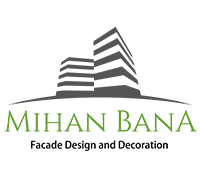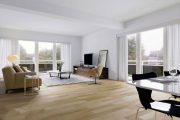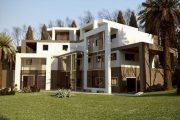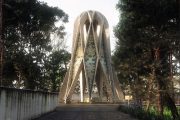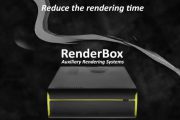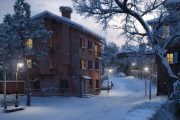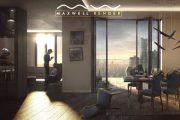طرح اولیه این کلیسا که توسط schneider+schumacher کشیده شده، در سال ۲۰۰۹ میلادی برنده جایزه شد و ایده اصلی آن، فراهم آوردن مکانی جهت عبادت برای مسافرانی است که از اتوبان های نزدیک wilnsdorf عبور می کنند.
این بنا که سایر نیازهای یک توقفگاه کنار جاده ای مانند پمپ بنزین و رستوران را تامین می کند، فضایی آرام را در اختیار مردم قرار می دهد که در آن دعا بخوانند.
همچنین این کلیسا به جای استفاده از نمادهای قدیمی برای اعلام وجود خود، با تکیه بر جذابیت های تازه و ساختار بدیعی که دارد، مسافران را به سمت خود جذب می کند.
شکل کلیسا در واقع تفسیری سه بعدی از عکس دو بعدی یک کلیسای معمولی است. از نزدیک به نظر می رسد کلیسا در حال رشد کردن و فرو رفتن درون تپه هایی است که در اطرافش وجود دارد، در حالی که دو بازوی که این تصور را به وجود می آورند، از ورودی کلیسا در برابر عوامل جوی مراقبت می کنند.
همچنین سقف داخلی از یک ساختار منحنی زیبا از جنس چوب ساخته شده و پنجره های چوبی در آن تعبیه شده تا نور طبیعی محیط را به داخل ساختمان بیاورد.
michael Schumacher در مورد دلیل ساختار منحصر به فرد آن می گوید: مکان های خدمات کنار جاده ای همیشه پیام های واضح را با تابلوهای بزرگ به مسافران منتقل می کنند. پیام هایی مانند اینجا غذا بخورید! اینجا بنزین بزنید!…آنها شهرهایی کوچک اما ناقصند که مکانی برای عبادت و خلوت کردن انسان با خود ندارند.
او اضافه می کند: سعی کردم به شکل غیر مستقیم جذابیت هایی در بنا به وجود بیاوم تا همه برای دیدن آن به اینجا بیایند و در آن عبادت کنند نه اینکه تنها یک صلیب بالای آن قراردهم تا همه بفهمند به کلیسا آمده اند.
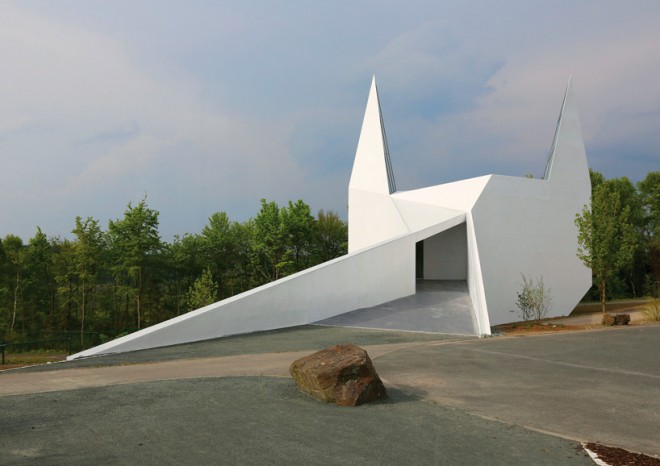
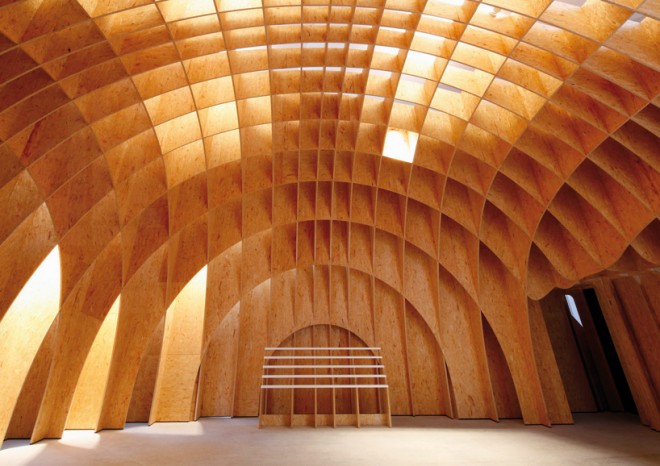
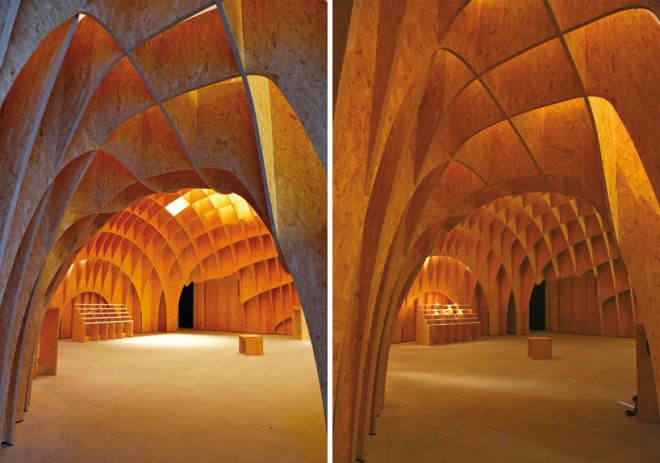
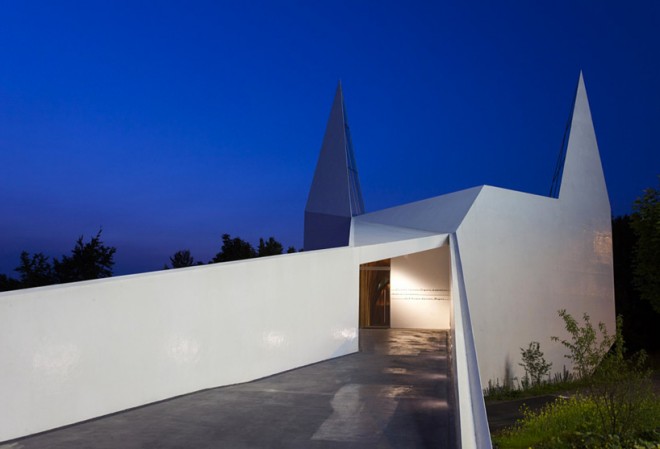

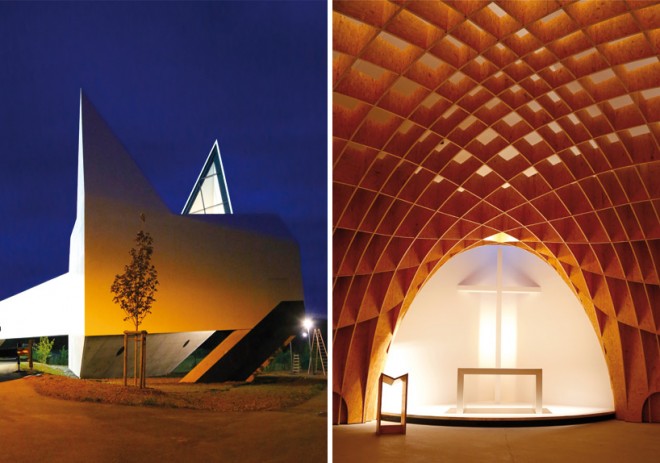
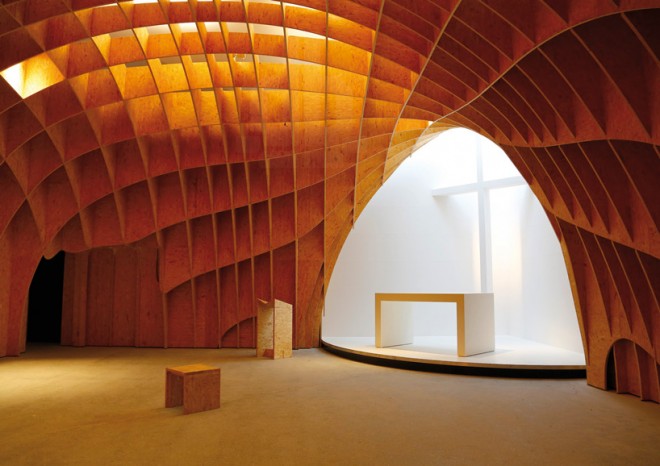
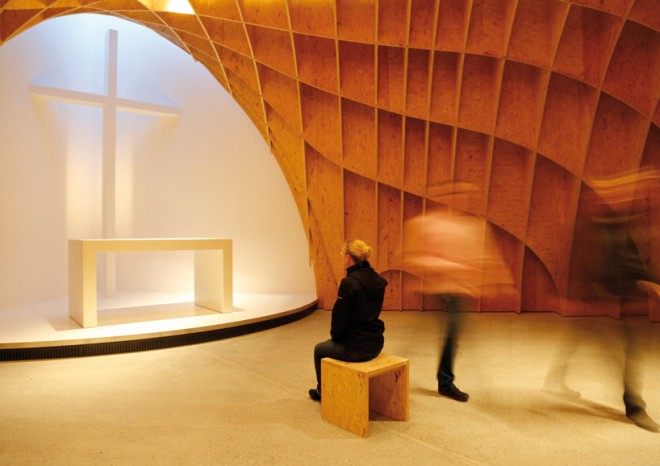
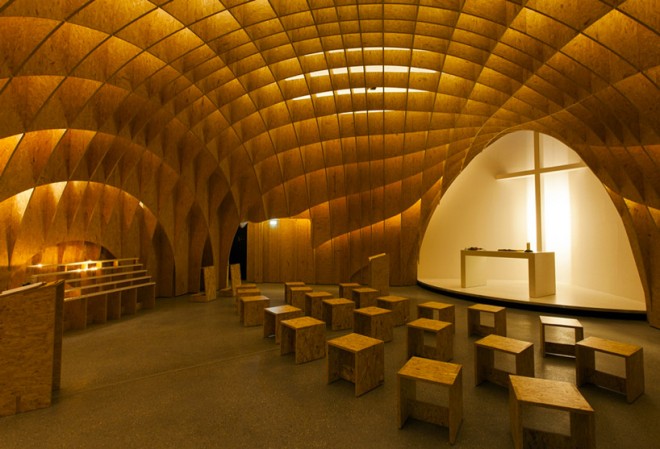
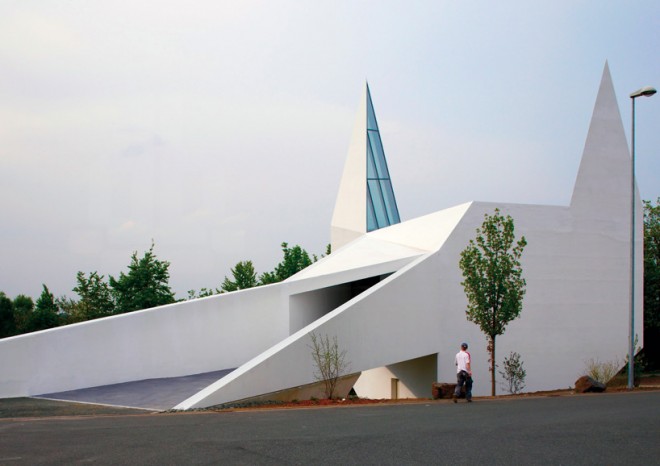
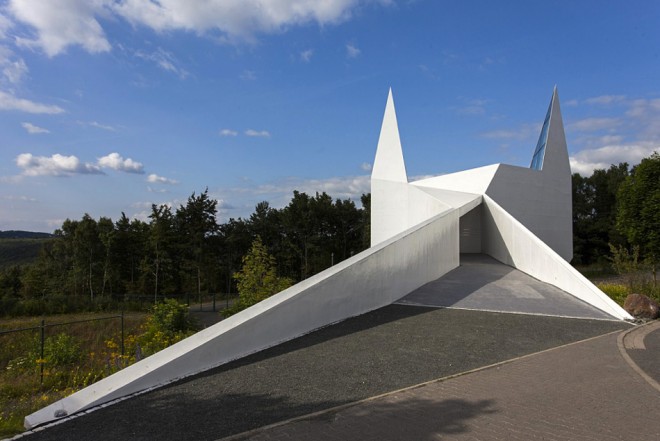




نقشه ها :
English version :
schneider+schumacher creates autobahn chapel siegerland in germany
based on the winning design proposal by schneider+schumacher from a competition in 2009, the ‘autobahn chapel siegerland’ provides a place for travelers to stop for worship on a highway near wilnsdorf, germany. the structure complements and contrasts the other functions comprised in the adjacent roadside stop (gas fill up, eating, sleeping), creating an opportunity for quiet contemplation and prayer. furthermore, rather than relying on bold signage to announce itself to oncoming vehicles, the church takes a visually distinctive form to communicate its presence.the chapel’s form is a three-dimensional translation of a typical church pictogram with two pointed steeples. from a closer view, the building appears to grow out of the hillside, via its bridged walkway leading to a covered entrance. on the interior, a domed ceiling is created by a gridshell of curving wood profiles. daylight from spires’ skylights illuminate the space through the vaulted structure. schneider+schumacher autobahn chapel siegerland designboomthe new highway church is composed with a square nave, two spire towers, and an access bridge at the southwest corner. the exterior has a monolith white materiality, and takes an angular and dynamic form. the internal space is shaped by a vaulted ceiling, which is constructed of 66 engineered lumber (oriented strand board) profiles. the timber ribs are slotted into one another to create a rigid and self supporting structure. the design team utilized parametric computer programs to generate the geometries and produce construction documentation, including 650 individual parts.architect michael schumacher describes the conceptual basis as follows: ‘motorway service areas are places with an unmistakably direct message. huge signs point to what goes on here: filling-up, eating, sleeping and maybe also, for a bit of distraction, a visit to a gaming mall. they are little cities, but without the subtle layers – no spaces for quiet contemplation or prayer, no beautiful spaces. the small motorway church offers an opportunity to fulfil these fundamental needs, and provides these in a place where they are arguably most lacking. for a building to make an impact in such surroundings, it needs to talk the same unmistakably direct language (at least on the exterior). whether approached from afar from the dortmund direction, or from the motorway service area, the church represents a built version of the motorway church signage. even though its exterior form is abstract, it still signals in an immediate and direct way: ‘i am a church!’ ‘
roject info:
location: wilnsdorf, germany
procurement documentation: competition 03/2009
construction dates: 03/۲۰۱۱ – ۰۵/۲۰۱۳
site area: approx. 500 sqm
gross floor area: approx. 240 sqm
gross volume: approx. 2.050 scm
dimensions: chapel, approx. 14 x 14 m + access bridge
client: autobahnkirchenverein siegerland e.V. / herr hartmut hering, frau ute pohl
architecture: schneider+schumacher planungsgesellschaft mbH
project architect: michael schumacher
project manager: hans eschmann
construction manager: kerstin högel
team: michael schumacher, hans eschmann, kerstin högel, alexander volz, ragunath vasudevan, elmar lorey, jana heidacker
structural engineers: b+g ingenieure bollinger und grohmann gmbH
building services: rpb ingenieure gmbH
surveyor: dipl.-ing. j. seelbach
structural work (reinforced concrete): w. hundhausen bauunternehmung gmbH
structural work (wood construction): holzbau amann gmbH
windows: metallbau weinmann
façade surface coating: elacoat gmbH
steel-staircase: ernst stahl- u. treppenbau gmbH
flooring: obering. kaspar könig & söhne, hartmut thielmann baugeschäft
interior wooden construction (plus furniture): schreinerei hein gmbH
lighting: ERCO gmbH
ventilation / floor heating: robin sohn gmbH
electrical work: michael pitthan gmbH
doors: metallbau weinmann, holzbau amann gmbH
منبع : Design boom
